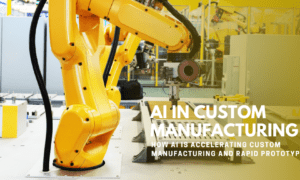In the modern era, artificial intelligence (AI) has rapidly evolved, giving rise to highly efficient and scalable architectures. Vasudev Daruvuri, an expert in AI systems, examines one such innovation in his research on Mixture of Experts (MoE) architecture. His work underscores how MoE is transforming large-scale AI, enhancing computational efficiency, and enabling expert-driven task specialization.
Breaking Free from Monolithic AI Models
Traditional AI models operate as monolithic neural networks, where every layer processes an entire input without differentiation. This approach, while effective, leads to significant computational inefficiencies. MoE addresses this by dynamically selecting specialized “experts” for different parts of an input, ensuring that only the most relevant sub-models are utilized at any given time. This method enhances performance while reducing computational overhead.
The Power of Sparse Activation
A defining characteristic of MoE is its sparse activation mechanism. Unlike conventional neural networks that engage all neurons equally, MoE selectively activates only a subset of its experts. This technique enables models to scale beyond a trillion parameters while maintaining computational efficiency. The approach is particularly advantageous in applications such as natural language processing and image recognition, where selective processing can lead to dramatic improvements in accuracy and speed.
The Role of the Gating Mechanism
A crucial component of MoE is its gating mechanism, which determines which experts are activated for a given task. The gating network optimally routes different inputs to appropriate experts, balancing workload distribution while preventing bottlenecks. Recent advancements in MoE gating strategies have introduced adaptive balancing techniques, which further optimize performance by ensuring uniform expert utilization.
Enhancing Multilingual Capabilities
MoE has proven particularly effective in multilingual AI models, where different language inputs require specialized processing. By leveraging dedicated experts for various linguistic structures, MoE models have achieved remarkable improvements in translation accuracy and cross-lingual transfer. These models efficiently process text in over 100 languages, significantly outperforming conventional translation systems.
Revolutionizing Computer Vision
Beyond language models, MoE has demonstrated its versatility in computer vision tasks. By dynamically assigning experts based on image features, MoE-based architectures have significantly improved classification accuracy while reducing computational costs. The ability to activate only relevant experts ensures that the models remain efficient, even when processing high-resolution images and complex visual patterns.
Optimizing AI Training Efficiency
Training deep learning models is computationally expensive and time-consuming. MoE reduces this burden by distributing learning across specialized experts, thereby decreasing redundancy in computation. Studies have shown that MoE-based models can achieve up to a 7.5x speedup in pre-training compared to conventional architectures while maintaining or improving performance metrics.
Addressing Load Balancing Challenges
One of the challenges in implementing MoE is ensuring that all experts are utilized efficiently. If certain experts are overused while others remain inactive, the model’s performance can degrade. Recent research has tackled this issue through improved routing strategies, dynamic capacity factors, and auxiliary loss functions that distribute the workload more equitably across experts.
MoE in Medical Imaging
The MoE architecture is making a significant impact in the field of medical imaging, where different imaging modalities require specialized processing techniques. By dynamically selecting experts based on imaging characteristics, MoE models enhance diagnostic accuracy while reducing computational requirements. This innovation is poised to revolutionize AI-driven diagnostics by enabling faster and more precise image analysis.
The Future of MoE in AI
As AI systems grow in complexity, Mixture of Experts (MoE) enables more efficient, scalable architectures. Researchers are developing automated architecture search techniques to optimize expert selection dynamically. These advancements enhance efficiency, allowing AI models to scale without exponential computational costs, ensuring sustainable growth in AI capabilities and resource utilization.
In conclusion, Mixture of Experts marks a significant shift in AI model design, offering an efficient approach to scaling artificial intelligence. By utilizing dynamic expert activation and sophisticated gating mechanisms, MoE optimizes resource allocation while enhancing model performance. Vasudev Daruvuri’s research highlights its transformative potential, demonstrating how MoE can drive the evolution of AI systems. As development continues, MoE architectures will play a crucial role in shaping intelligent, adaptable machine learning solutions that push the boundaries of AI capabilities.



































